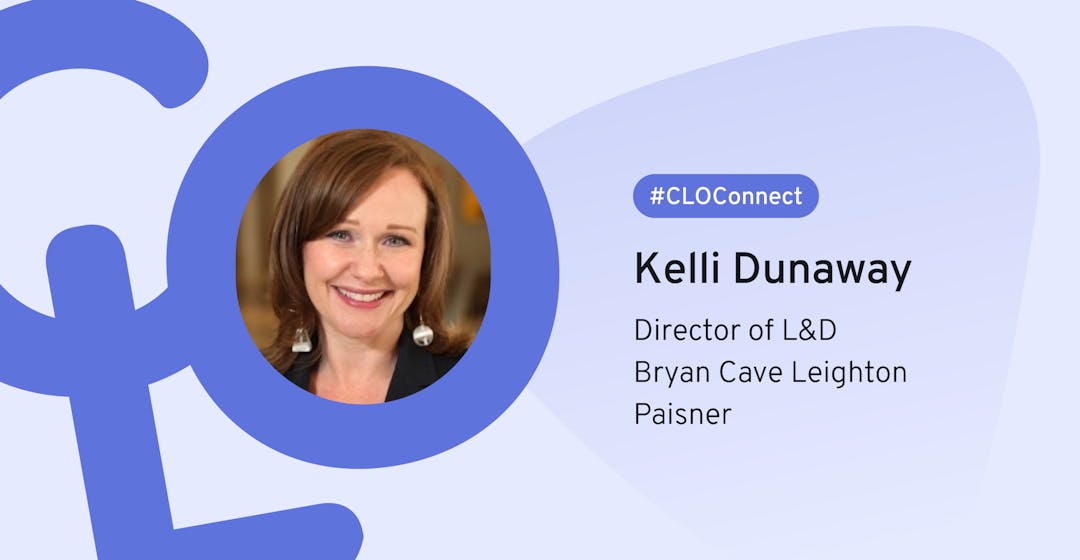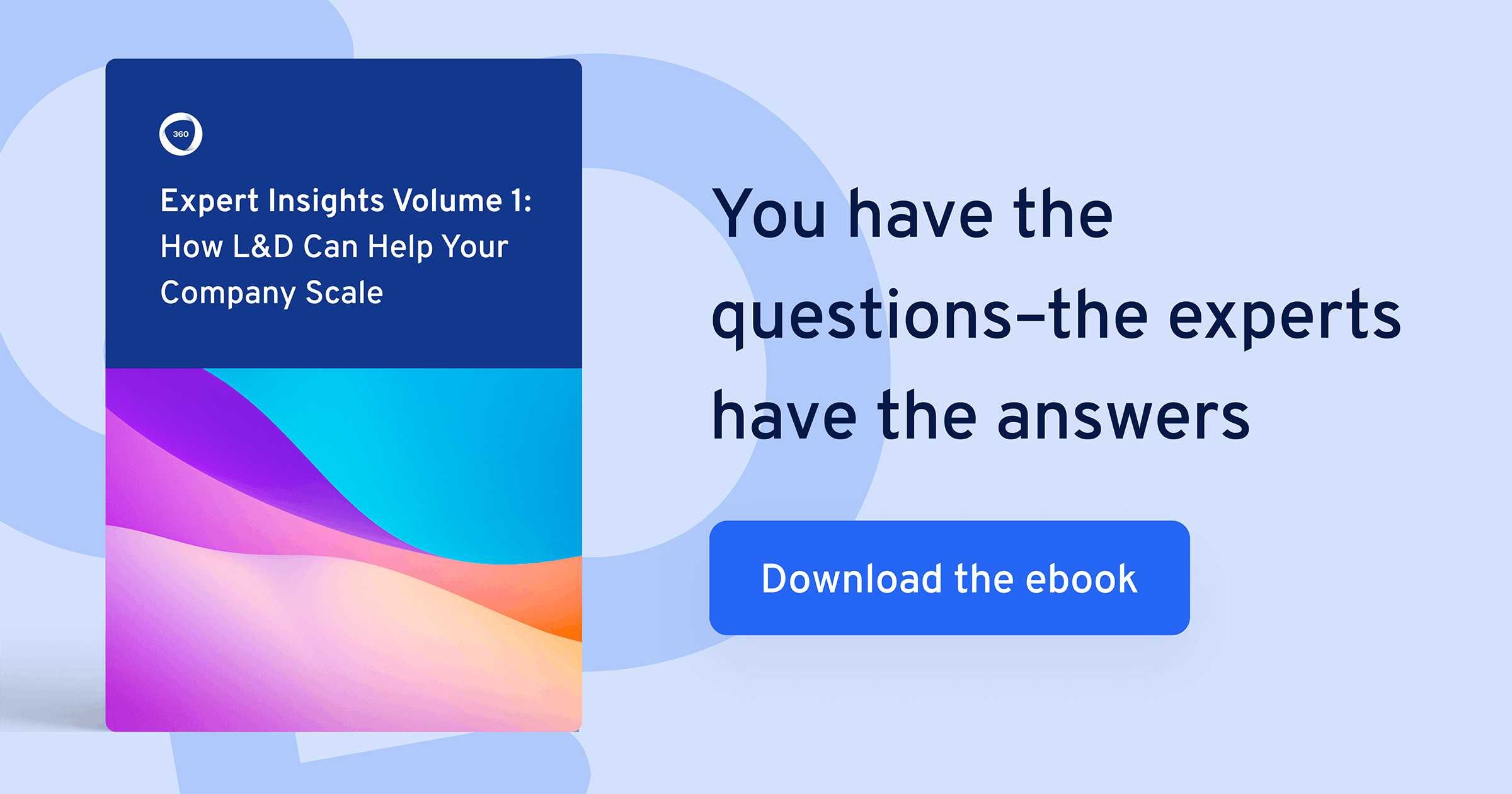
From Legal Risk Managers to Strategic Partners: How Bryan Cave is Changing Industry Perceptions
These days, we’re challenging a lot of traditional ideas about professional roles. Accountants aren’t just number-crunchers anymore; they’re key advisors weighing in on market strategy. HR teams aren’t just in charge of admin and payroll; they’re the engine room for organizational culture and performance.
Now, leading international law firm, Bryan Cave Leighton Paisner, is on a mission to change the classic conception of lawyers as being just problem solvers and risk managers. Their vision? Lawyers should become strategic partners working alongside their clients to understand the full scope of the challenges and opportunities they face.
As Director of Learning & Development for Bryan Cave, Kelli Dunaway has a central role to play in making this switch. Recently, I had the chance to speak with her about the L&D techniques she’s using to drive this change, and how she’s measuring the results.
We got started by discussing the changing nature of the legal profession, and what this means for learning and development.
Shifting the traditional legal mindset to focus on strategic partnership
As Kelli explains, Bryan Cave is modernizing its organization and shifting the way it serves clients. Now, their goal is to become a strategic partner working alongside their clients to truly understand their business, rather than focusing exclusively on legal issues. This way, says Kelli, the firm can build closer relationships with their clients and better serve their needs.
“When I talk about how we need to modernize, what I mean is that lawyers are trained to spot issues and then find every possible risk,” says Kelli. “We analyze everything that could go wrong, and what could go right. Then, we deliver a report back to the client.”
“What I see now is a need to really understand a client’s business. How does that business operate? What are its challenges? What’s the right long-term strategy? Once we understand that, we can provide a legal strategy to help the company meet its goals.”
According to Kelli, this change requires people to think about the legal profession in a new way. “It takes a real mindset shift, because now we’re partnering with our clients to offer another way to help them grow their business, rather than just responding to issues or legal challenges that come up.”
“For instance, let’s say a client calls with a problem. Traditionally, lawyers might have framed it as just a legal problem. But we need to start looking at it as a business problem, meaning we can help by finding ways for that business to meet its long-term objectives. This requires the right relationships, and a willingness to understand the client’s situation. It means getting outside the legal box to see the wider challenges and opportunities.”
So, how is Kelli using L&D to encourage this change in mindset?
It means getting outside the legal box to see the wider challenges and opportunities.
Need a few more CLO Connect expert insights? Find out How L&D Can Help Your Company Scale
The 2 new L&D initiatives Bryan Cave has introduced to make this strategic shift
As Kelli explains, she and the wider Learning and Development team have introduced two new initiatives to strengthen this focus on strategic partnership: establishing the Bryan Cave Business Academy, and developing internal executive coaches.
1. Establishing the Bryan Cave Business Academy
“We developed our Business Academy several years ago,” says Kelli. “This is where we train our associates to think more creatively, and to see problems more holistically. We also bring in our clients to help facilitate this shift. We want to open our eyes and our minds to seeing things beyond just the legal lens.”
As Kelli explains, the Business Academy has already made a significant impact. “The business academy has been a really powerful program for us,” says Kelli. “It has attracted a lot of press for the firm, and it has generated a lot of buzz amongst our teams.”
“The Business Academy was something new and different and creative, which is not exactly something that law firms are known for. We brought design thinking into a law firm, and we took associates on a different learning path than they’d experienced before.”
Although the long-term effects of this initiative can’t be measured yet, Kelli says the impacts have already been noticeable. “It’s been a really exciting project to work on. We’ve now completed the Business Academy for several classes, and these graduates are already helping to bring a new perspective into the firm.”
2. Developing internal executive coaches
On top of the Business Academy, Kelli and her team are also focusing on developing internal executive coaches to encourage a more strategic mindset.
“More recently, we’ve tried to bring more of a coaching mindset into the organization,” says Kelli. “To get started with this, I completed training alongside another lawyer who was moving into the Learning & Development Team. This was an intensive coaching program so that we could become certified executive coaches.”
“Now, we’re using this new coaching skill set to build an internal coaching program for our professionals. We’re specifically focusing on our high-performers, because we want to help them think differently, not just about how they approach problem-solving, but how they manage the people around them, and how they interact with their clients.”
For Kelli, the goal of this coaching program is to encourage people to develop a deeper understanding of client needs. “We want people to ask questions, to listen more, and then bring our own unique value proposition to solving problems,” says Kelli. “That’s how we deliver a better end product, because it’s improving the way we relate to our clients.”
Related: The L&D Case for Peer Training: 3 Unignorable Reasons to Make the Switch
We want to open our eyes and our minds to seeing things beyond just the legal lens.
Why internal executive coaches makes such a big impact
By curating and nurturing internal knowledge, Kelli and her team are creating a Collaborative Learning environment where teams can learn from each other and grow together. This focus has impacts beyond the walls of their organization: for Bryan Cave’s lawyers, every client engagement is a chance to put this holistic viewpoint into practice.
As Kelli explains, developing internal coaches was a deliberate choice. “There’s a particular value in having people inside the organization that live and breathe the challenges everyday,” she says. “They’re more intimately aware of the opportunities to shift our culture, and they can approach it from more of a grassroots level.”
“We’ll still use external coaches in a number of situations, but there’s a real advantage in developing this executive coach role internally. It allows us to shift the culture from the inside out, leveraging existing institutional knowledge about the way we work.”
Related: How We Use Peer Learning to Keep Our Company’s Competitive Edge
There’s a real advantage in developing this executive coach role internally. It allows us to shift the culture from the inside out, leveraging existing institutional knowledge about the way we work.
Bryan Cave’s 2-step approach to measuring its strategic partnership mindset
To finish our discussion, we chatted about the challenges of measuring the effectiveness of this shift for Bryan Cave to become strategic partners for clients. “Measurement is one of our major challenges,” says Kelli. “Specifically, determining our return on investment.”
So, where does Kelli begin? The first step, she says, is to focus on referrals.
1. Measuring client referrals
“A key metric is to look at client referrals,” says Kelli. “The more referrals we get, the more we know people are seeing the value in our new way of thinking. It’s a short-term metric, but it’s already happening, and we haven’t launched our whole coaching program.”
“Right now, the program is still behind the scenes,” she says. “We’re talking to leaders within the firm to identify people with the potential to succeed as executive coaches, or who could better support their long-term success through developing new behaviors.”
2. Measuring the shift in strategic mindset amongst leadership
“Over the long term, we’ll measure our success in the strategic mindset demonstrated by our leaders,” says Kelli. “Are our leaders showing more of a questioning and listening type of leadership? Is this expanding our existing client relationships?”
Of course, Kelli explains that the firm’s real long-term objective comes down to establishing trusted relationships with new clients. “Are we growing our business with entirely new clients who find our approach a better fit for their business challenges and opportunities? That’s the real goal in the long term, and it’s something we’re very excited to be working towards.”
Thanks again to Kelli for sharing her thoughts and experiences with us!
While you’re here, check out my expert interviews with Theresa Cook of PwC Luxembourg about her four-step approach to handling complex L&D demands, and with Jeremy Lane of TTI on how he encourages people to see L&D as a fundamental part of business.
Want more peer insights on transforming workplace learning? Check out #CLOConnect, our interview series with top L&D leaders on driving growth and scaling culture through Collaborative Learning. You can subscribe (below 👇) to our weekly newsletter to receive our latest posts directly in your inbox.


